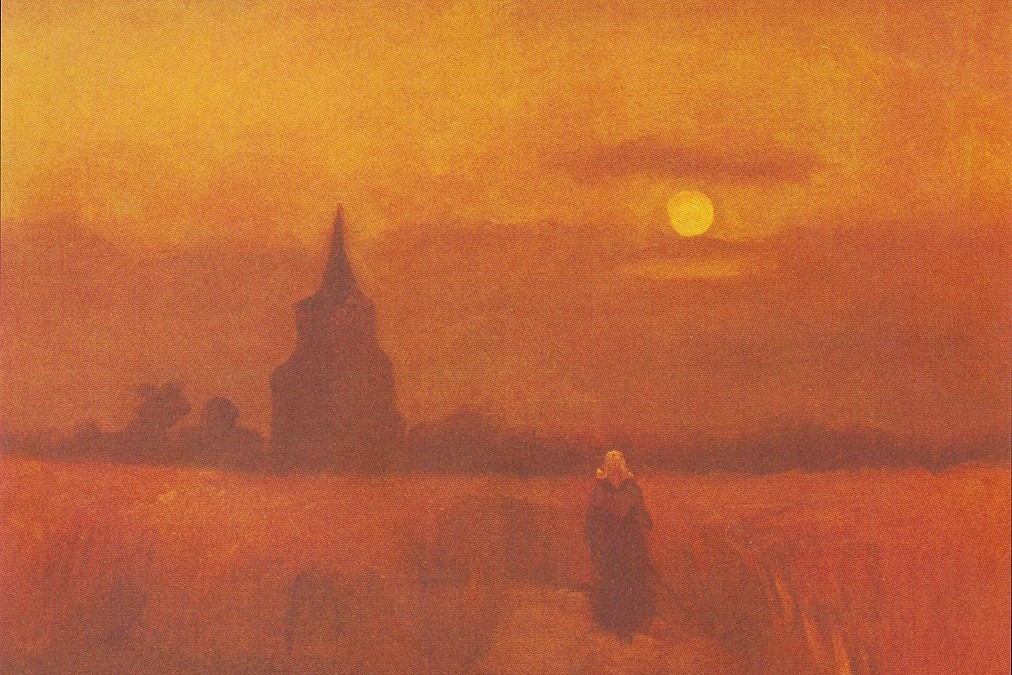Despite the substantial threats posed by global climate disruption, the realities and risks really haven’t sunk in for many people. Even though there is a very real possibility that the world may become uninhabitable for humans within a century or so, in general people aren’t reacting as if this is something that can actually change their lives or make their children’s lives miserable. Part of the problem may be that it’s just so hard to react to something that appears to be so far off in the future—even though the early effects are already reshaping parts of the planet, causing crop failures, intensifying species extinctions, and triggering extreme weather events.
Like teenagers speeding down the highway at night, headlights off, caution numbed by the hypnotic rush of the wind and hum of the tires, locked into that unshakeable teenage sense of immortality, we just can’t seem to fix our minds around the tangible, all-too-real scenarios that are likely to accompany a changed world where the climate careens beyond limits that any of us have seen in our lifetimes.
Sometimes it takes a jolt of speculative fiction to wake us, a dystopia written so well that the reality feels as though it is right outside our doors and windows, scratching to get in. Here are four novels—all available as ebooks—that give you a chance to put yourself inside a world where the normal rules of human survival are turned inside out.
The Drought by J.G. Ballard
Written well before the term “climate change” had even entered our everyday lexicon (1965), this J.G. Ballard novel demonstrates his unique gift for placing characters in difficult or surreal environments and then watching them grow or disintegrate trying to survive. The story begins with the apocalypse well underway, a drought that has wiped out most of the world’s population and caused the survivors to race toward the few remaining sources of water. Both the physical landscapes that Ballard paints and the characters who grapple with the impossible conditions are described with authority and intensity, almost as though Ballard had personally lived the scenario he brings to life in this book. Available as an ebook at Barnes & Noble and other online stores.
The Year of the Flood by Margaret Atwood
Margaret Atwood excels at taking the worst excesses of our present-day world and bumping them just a bit to create a completely convincing future, much as she did in the highly acclaimed The Handmaid’s Tale. The Year of the Flood is actually the second book in a series (the first being Oryx and Crake), but I mention it first because for me the environmental challenges in the second book fit the dystopian framework a bit more closely. The biological disaster that resulted from events in Oryx and Crake is examined from another perspective in The Year of the Flood. An environmentalist cult, God’s Gardeners, seek rejuvenation and restoration following the global disaster, the Waterless Flood, while the ruling classes use corruption and force to control and profit from the diminishing resources left in a devastated ecosystem. Atwood’s novel depicts a chillingly believable future in a thoroughly imaginative and inventive way.
A Friend of the Earth by T.C. Boyle
T.C. Boyle’s protagonist in A Friend of the Earth, Ty Tierwater, is an ecoterrorist who has spent a large part of his life fighting against the destruction of the planet and its resources, but who is, by his own admission, an abject failure at everything he has attempted. In the ruins of a world where life is made miserable by monsoon-like rains, stifling heat and humidity, and a paucity of good options for the struggling population, Tierwater tends a reserve for nearly extinct animals established by a rich benefactor and tries to rebuild a broken family, seeking redemption and serenity amidst the chaos of a planet pushed past its limits. If you like your dystopian visions leavened with a touch of irony and humor, Boyle knows how serve the dish perfectly.
A Being Darkly Wise by John Atcheson
This speculative tale with elements of an adventure thriller, set much more closely to the present than the other works mentioned, places a group of environmentally aware individuals in a remote setting in British Columbia, where the basic stakes of survival become exceedingly complex as the mission progressively unravels. The leader of this expedition, Jake Christianson, whose personality seems to shift from inspirational brilliance to maniacal zealotry and back again, is one of the most quixotic characters ever presented in a novel that grapples with the underlying theme of climate change. The adventure tale keeps the plot moving along at a fast clip and the thoughtful examination of our relationship to wilderness and the world provides an intellectually grounded foundation for the book. Available on Amazon and other sites.
A Beacon of Hope for the Future
If all this sounds impossibly discouraging, you might want to follow these four shots of dystopian gloom with a chaser of optimism. Rebecca Solnit’s A Paradise Built in Hell highlights extraordinary stories of how people in times of disaster shed inhibitions and come together as strong, functioning communities. Let’s just hope we can counter the climate disruption juggernaut before even greater disasters become inevitable.
